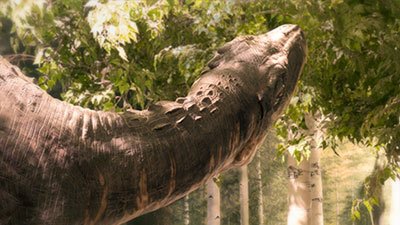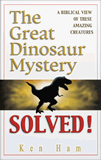
The Great Dinosaur Mystery Solved! Object Lesson 1
Demonstrate the difficulty of reliably reconstructing the past, by using what we see in the present, without an eyewitness.
Purpose
To demonstrate the difficulty of reliably reconstructing the past, by using what we see in the present, without an eyewitness.
Procedure
- Find an object you don't mind destroying (an old tie or other item of clothing; a cup; a piece of hardware, etc. The more obscure or unusual the object, the better).
- Break (or tear) the object into pieces in a creative way (cut it with a saw; crush it with pliers; drop it out a window; drive the car over it… Use CAUTION!).
- Choose a piece of the broken object to give to the student (be certain there is no way the student could know what the original object looked like).
- Have the student
answer the following questions:
- What did the object look like before it was destroyed? (Have the student draw a picture of it.)
- How old is the object? (Ideally the teacher would know the exact date of manufacture or copyright.)
- Where did the object come from originally? (In the house/school; ideally, exactly where was it made.)
- How was the object used? (A common object with an uncommon use would be good, e.g., a cup or bowl that had been used as a planter).
- What color was the object? (Use something multi-colored if possible, and just give the student a piece with one color on it.)
- How was the object destroyed? (This should be the most interesting part! Be creative!)
- Share with the student your “eyewitness” account—the true answers to the questions.
- Have the student evaluate his/her explanations and list assumptions made in answering the questions.
Point
Scientists often try to determine the answers to questions about the past using scant evidence from the present. For example, they may take a tooth and some bones and come up with their idea of how an animal or person looked and what it was like.1 But they cannot know for sure what the creature or person looked like, how it behaved, or how or where it lived (e.g., the bones could have been transported by a flood from their original location to the location where they were found, for example). They cannot determine skin color, or even how old the bones are without making lots of assumptions. They also cannot determine exactly how the creature died. Perhaps it was already dead before it was buried. Perhaps it died in a flood. Perhaps another animal killed it. The worldview a scientist has chosen will influence his/her interpretation of the evidence.
We can only know the truth if there was an eyewitness. The Bible records an eyewitness account of what happened in the beginning. God created all things and tells us about it in His Word!
Footnotes
- National Geographic magazine, in its March, 2000 issue (“Behind the Scenes” section), presents four artists' interpretations of a supposedly two million-year-old “hominid.” If you can get a copy, it is worthwhile to see how different the sketches are! There is more imagination than science at work there.
Recommended Resources

Answers in Genesis is an apologetics ministry, dedicated to helping Christians defend their faith and proclaim the good news of Jesus Christ.
- Customer Service 800.778.3390
- © 2024 Answers in Genesis






